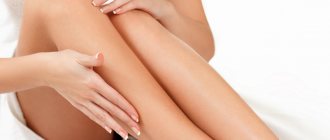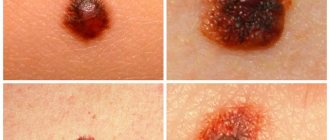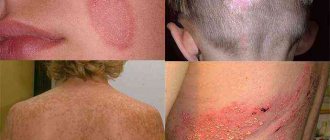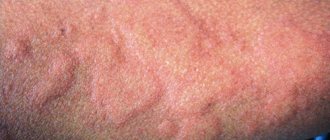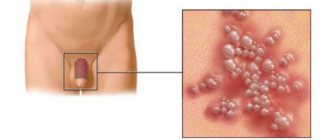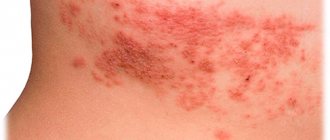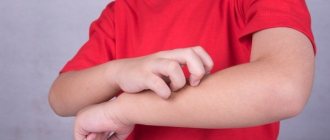Home > How to get rid of fleas
Fleas are parasites that feed on the blood of their hosts. The reason for close contact between people and fleas is pets, cats and dogs. In addition to sucking blood, house fleas also transmit diseases from one carrier to another. These parasites infect humans with tapeworm larvae and bubonic plague pathogens.
Flea bites are incredibly itchy and to make matters worse, there is no quick-acting cure for them. In this review, we will look at the products that have proven to be the most effective in combating the symptoms of flea bites.
Ticks
Recreation outdoors can lead to unpleasant encounters with ticks. It doesn’t matter where exactly we are located: in the yard, in a city park or in the forest. Every year these insects conquer more and more green areas, and cases of infection with borreliosis or encephalitis are becoming more frequent.
Tick season lasts as long as the weather is warm. Fortunately, in our country, most diseases transmitted by ticks do not spread due to the small number of dangerous tick-borne species compared to other countries. For example, in the United States, Canada and Brazil, more than 600 people become infected with Rocky Mountain spotted fever every year. This is a disease caused by a tick that carries the rickettsia bacteria. However, Lyme disease, caused by ixodid ticks, can also be contracted in Ukraine.
The danger of lice bites
Such dangers of lice bites as pyoderma and the possibility of developing purulent diseases are not the only potential troubles. History and parasitology show that lice-borne diseases are much more dangerous, including:
- typhus
- relapsing fever
- trench fever.
These diseases were once responsible for the deaths of many thousands of people around the world, but today they only affect the population of the poorest developing countries.
This is interesting
Lice are one of the hosts of rickettsia - bacteria that cause a large number of diseases quite similar to one another. In tropical countries, lice carry diseases that are unfamiliar to residents of the temperate zone, and therefore the full list of infections they carry is quite wide.
The first symptoms of diseases caused by most lice-borne infections are fever, headaches, nausea, and fever. If such symptoms occur several weeks after severe lice bites, you should definitely consult a doctor.
Tick bites
Ticks are carriers of many infectious diseases, including typhoid. As soon as a tick lands on our skin, it is able to move around the body, looking for more convenient places to live. Closed, wrinkle-free clothing in light shades and insect repellents help prevent tick bites in high-risk areas (in the forest, among wild nature).
Tick bites may not be detected immediately. Sometimes there is no inflammation, allergic or toxic reaction on the skin. Infectious disease experts explain this by saying that by piercing the skin, the tick injects an anesthetic that acts as a pain reliever. For this reason, the person bitten does not feel pain.
Symptoms
— Within half an hour from the moment of the bite, the skin swells at the site of the flea bite. — The bite turns red and itches very much. You may observe a rash on the skin around the affected area. — Within a day or two, the bite site may turn into an abscess or small wound. — The rash may grow, but it takes a long time. Small bumps from the bites may bleed. - Secondary infection may result from itching and scratching of the affected area. - In some cases, people may have a very severe reaction to the sting. Symptoms include chest pain, severe swelling, difficulty breathing, hives, and so on. - Flea bites can be found around the waist, neck, ankles, armpits and on the creases of the elbows and knees.
A flea on a human body before a bite
Treatment
Pet owners are very familiar with fleas. However, this does not mean that people without pets are protected from parasite bites. All people are susceptible to flea bites to one degree or another. Here are some solutions to help you relieve the symptoms of the bite:
- First of all, you should resist the urge to scratch the bite site. Flea bites are extremely itchy, and scratching them increases the risk of infection. - Once you have determined that it is a flea bite, wash the affected area under cold water and mild soap. Then pat the area dry. This solution will help reduce the risk of infection. Avoid hot water as it causes itching. - Ice should be applied to the affected area to reduce swelling. — Apply sunburn liquid or hydrocortisone cream to the affected area of skin to relieve itching. Tea tree oil also promises relief. - If the itching is intense, you could take an oral antihistamine. It will help reduce the allergic reaction triggered by the body in response to the bite. Consult your pharmacist for the most appropriate antihistamine if available. — Do not neglect preventive measures against tapeworms. If you experience symptoms other than itching, contact your doctor immediately. - You may be able to detect and remove adult fleas from a dog or cat's fur, but there may be many more fleas in and around the house. You should use insecticides, including pyriproxyfen or methoprene, which will help kill flea eggs, pupae and larvae. Remove any trash from the house, organize things that are lying around on the carpet (for example, a pile of shoes), all of this is important, since objects can serve as a breeding ground for fleas. These parasites multiply at an amazing rate. Treating your surroundings with a spray can help you get rid of fleas in no time.
Photo of the flea bite process
Flea Control
When it comes to human bites, treatment is not complicated. However, treating each bite can be challenging. Once parasites have entered the home, bites can become an ongoing problem.
— If your pet has been bitten by a flea, apply a topical cream, as recommended by your veterinarian, which will bring relief to the animal. -You can also apply aloe vera gel as a proven natural remedy. Topical use of aloe vera may not be harmful. However, aloe vera can be harmful when ingested by animals, causing diarrhea and vomiting. — Insecticides can help you control the spread of fleas if they are a common problem in your area. — Sometimes it’s worth calling an SES specialist, since fleas may require a professional exterminator. Proper study of the surrounding area and identification of problem areas by a specialist can be important in some cases. — The key to solving the problem is to prevent fleas from infesting your home, as well as your pet. Cleanliness is the main requirement against fleas. Vacuum every corner of your home on a regular basis. -You can also use pesticides and flea traps, which are commercially available. Spraying diatomaceous earth around your home will help keep fleas and other parasites at bay. - Spraying your pet's kennel with a non-toxic flea killer will help you disinfect the problem area. - If you are concerned about protecting your pet, a flea collar, an essential oil bath, and an improved diet (natural food) will help protect your pet from pesky pests. — Pet owners should vacuum their carpets regularly. Remember, the dust collection bag must be taken out immediately upon completion of cleaning. — Watering the lawn will help kill flea larvae, since they cannot survive under water. The larvae feed on the feces of adult fleas. Water helps wash away feces and larvae. — Another effective method involves the spread of nematodes that feed on flea larvae. Nematodes used to destroy larvae are harmless to trees, plants and humans. Pesticides or nematodes should be spread in areas frequently visited by the animal.
As a rule, a flea bite is not a problem that requires complex treatment. However, the most difficult thing is to refrain from scratching the itchy bite area, since scratching the bite can lead to serious consequences. If you notice symptoms of a flea bite, you should take your pet (cat or dog) to the veterinarian for the proper course of treatment.
Lyme disease
Ixodid ticks, which transmit Lyme disease, are considered the most dangerous. Its symptoms include the appearance of red circles on the skin, headache, skin rash, fatigue, and fever. In the absence of treatment, the functioning of the nervous and cardiovascular systems is disrupted, and joints suffer. In most cases, the disease can be successfully treated with antibiotics. The sooner you see a doctor, the less risk there is to your health.
Medical network experts advise developing a useful habit: after relaxing in nature, go to the bathroom and carefully examine all attractive places for ticks (scalp, face, area behind the ears, armpits, area under the knees, chest, upper and lower extremities).
After each walk, take a shower and wash your clothes thoroughly. If an insect is found, contact a dermatologist or infectious disease specialist. Removing the insect yourself may increase the risk of infection. For example, due to:
- insufficient disinfection;
- incomplete removal of the tick;
- low immunity;
- the presence of other infectious diseases or inflammatory processes in the body.
Symptoms of lice and how the patient feels
When there are a large number of linen lice, their bites cause a disease called pediculosis. Its symptoms are much more extensive and distinct than the signs of single bites:
- Red, dry rashes all over the body, even in areas where there are no bites. This rash is itchy and painful when scratched. The photo shows erythematous rashes caused by linen lice bites:
- The resulting excoriations are small local self-injuries of the skin in the form of small scars. They look like healing scratch bites, but can also occur where lice have not bitten at all. Quite deep scars later appear at the site of excoriation.
- Blue pigment spots at the bite sites. This is a fairly characteristic symptom that rarely develops even as a result of allergic reactions to the bites of other insects.
- In places with accumulations of bite marks, boils and ulcers appear, which, if left untreated, develop into pyoderma. The photo below shows advanced pyoderma caused by linen lice bites.
- Symptoms of “tramp disease” are roughening, thickening of the skin, excessive pigmentation and darkening.
However, the symptoms of lice are usually characteristic of people who have not gotten rid of linen lice for years and live in unsanitary conditions - tramps, refugees, prisoners in camps in the tropics. The development of lice is preceded by such obvious and unpleasant symptoms of parasite attacks that, if possible, a person gets rid of lice even before serious damage develops.
Spider Black Widow
These spiders are also called karakurts - they are the heroes of many films. The females of these predatory arthropods are considered the most dangerous. Poisonous spiders can bite and pose a threat to human health and life. They are not aggressive by nature and bite only in self-defense (for example, after being accidentally pinned down). The widow spider is able to move quickly and attack at the most unexpected moment. Karakurts live mostly in the south of Ukraine (Azov region, Black Sea region, Kherson region).
Lice
The favorite place of lice is hair. You can catch them using a comb, a hat, or a scarf of an infected person. If itching appears on your head, do not ignore it. Have a family member check the back of your head, neck, and behind the ears. If you find parasites, try not to scratch your scalp. Wounds contribute to the rapid penetration of infection into the blood.
Products for treating lice bites and relieving pain
Usually, random and single bites of linen lice do not require treatment and go away without consequences after a few days.
In case of serious infestation with parasites and the development of pediculosis, the following should be used to get rid of itching:
- Hydrogen peroxide - it is used to treat the freshest bites with a puncture wound that has not yet healed. First of all, such treatment is important for disinfecting affected areas of the skin.
- Hydrocortisone ointment, which prevents the development of allergic rashes.
- Balm “Rescuer” or ordinary Vietnamese star, which can relieve itching and reduce the size of the papules themselves.
If pustular rashes, body rashes, or other symptoms of head lice appear, you should consult a doctor as soon as possible. Self-medication - especially if misdiagnosed - can be dangerous and can make the situation worse.
What is useful to know about human lice
How to get rid of lice
To get rid of nits (lice eggs that adults lay on clothing or hair), use lice products in accordance with the instructions and as prescribed by a dermatologist (lotions, shampoos, creams). During treatment for lice, you need to keep your clothes, underwear, bedding, and hygiene items clean. For those who are not infected, it is important to be careful when communicating with infected people and take preventive measures:
- observe the rules of personal hygiene;
- use only your own things and do not give them to an infected person for temporary use;
- Vacuum blankets, pillows, carpets and change bed linens daily.
How lice bite
Answering the question of how bed lice bite, you can give a similar answer to the question regarding other types of insects. The principle is identical : the parasite’s mouth is made up of jaws that resemble stilettos.
By biting, the louse pierces the skin with the help of its jaws and injects a little enzyme into the resulting wound, which prevents human blood from clotting. It is this substance that causes irritation, itching and redness at the site of the lesion.
Once the integrity of the skin is broken, the insect begins to search for an artery, which will become a source of nutrition. The pest sucks, clinging as closely as possible to the human body - its back part rises slightly.
The adult repeats the meal every 2-3 hours. After finding out how linen lice bite a person, it is worth moving on to the logical section on the correct treatment of lesions.
Flea bites
You need to start getting rid of parasitic organisms by purchasing protective equipment for animals. Disinfectants will help reduce discomfort after a bite in a person. Dermatologists advise treating bite sites with disinfectant solutions or ointments purchased at a pharmacy or specialized medical institutions.
To prevent re-infection, take care of the sterility of your pet’s habitat and monitor its social circle during walks. First of all, prohibit contact with stray animals.
Emergency help
Blisters from mosquito bites in children and adults are treated with improvised means.
- Baking soda. Add a little water to form a paste. Apply to the mosquito bite site and leave until completely dry.
- Laundry soap. Wash the wound with water, foam the soap, apply foam, and leave for 5 minutes.
- Toothpaste, shaving foam, after. Treat the blister with the chosen product and wash it off after a few minutes.
- Menovazin. The solution contains several pain-relieving components, menthol. Relief occurs immediately upon application. The solution relieves swelling, improves blood circulation, and relieves inflammation. If necessary, repeat the treatment.
- Vinegar. Use a solution. For 100 ml of water, 1 teaspoon of the product. Wipe the blister after a mosquito attack or apply a compress.
- Aloe juice. An excellent drug against inflammation, redness, itching, swelling. Buy it at the pharmacy or use a leaf from a houseplant. First place it in the freezer for a couple of minutes. Cut it, fix it at the site of the mosquito bite, or wipe the wound.
Treatment of scabies
A dermatologist will help you get rid of scabies after examining the patient and making a diagnosis. It is advisable to wash the patient’s clothes in hot water and keep the bedding sterile. At the doctor's discretion, the patient is prescribed antihistamines to relieve itching. The treatment method is aimed at destroying the pathogen through the use of acaricidal drugs. These are drugs aimed at combating ticks (acaricides are ticks: ancient Greek ἄκαρι - tick and lat. caedo - I kill).
Mosquitoes, ants, midges, midges
Wounds from ants
Bites from mosquitoes, ants, midges and midges lead to a small rash on the surface of the skin.
The rash is very itchy as the skin reacts to the insect's saliva, which it injects before it bites.
People with allergies may develop fluid-filled blisters or round, fluid-filled areas around a wound (scars) in response to mosquito, ant, midge, and midge bites.
Find out more Scabies mite in humans, treatment and symptoms
Bed bugs
Bedbugs can be found in the bedding of hotels and inns. They can even live in your luggage or on your pet's belongings. They become most active at night.
On average, the lifespan of these bloodsucking creatures is about a year. They are easily confused with other small insects and can often be identified by small red blood stains on your bedding in the morning. After quenching their thirst, they become clumsy, move slowly, and therefore during sleep they are easy to crush with the weight of their body.
What do lice bites look like?
Bites from linen lice look almost the same as bites from the pubic or head lice of their “relatives”. Each bite is a small, red, itchy bump that is usually well-circumscribed and separate from other areas of the affected skin. In the center of each such papule, a red dot is clearly visible - a trace of the hole through which the parasite sucked blood.
The photo below shows the linen lice themselves at the time of the bite:
And in the next photo there are individual bites of linen lice:
When a louse bites, it injects saliva containing painkillers into the wound, making the bite itself quite painless and can only cause a slight tingling sensation. Below are a few more photos that show how linen lice bite:
Review
“After a week with our parents in the village, we began to suspect that it was not mosquitoes that were biting us. Firstly, there were no mosquitoes in the house, and we turned on the repellent regularly. But in the morning everyone is still itching, there are red bites all over the body, even where the blanket was there all night. At the same time, nothing seems to bother us or the child at night. We started to investigate and found out that the entire bed was infested with lice. And only on one sofa, on which dad watches TV. They are small, they fit in all the folds. We immediately took this bed and the linen from the other beds to the dry cleaners in the regional center, sprinkled the whole house with pyrethrum, fried the mattresses and pillows in the sun, and after that nothing seemed to bother us.”
Anna, Eagle
Linen louse bites are most often localized in those parts of the body to which the folds of clothing are adjacent. Usually this is the lower back and area around the navel, shoulders, neck, upper back, inguinal-femoral fold, armpits. However, parasite bites can be located on other parts of the body, up to the calves and forearms.
It is also useful to read: Features of lice bites (with detailed photographs)
And one more thing: It’s time to finally remove these annoying nits from your hair (the article has more)
After some time, linen lice bites become quite painful and cause severe itching.
It is normal for a person to have an involuntary reaction to scratch the bite site, but when you find them, you should control yourself and not scratch to avoid infection of the scratches.
Bedbug bites
Red bites on the arms or shoulders are bedbug marks. Under no circumstances should you scratch them (you can get infected). An effective antihistamine can be used as prescribed by a dermatologist.
In order to prevent re-infestation, you need to carefully treat contaminated bedding, decorative items, toys or other pieces of furniture. This can be done by dry cleaning, using heat treatment or special products. Be sure to ensure the cleanliness of things in the house, refuse to use other people's bedding and towels.
Fleas
Flea bites appear as small clusters. Those who are allergic to flea bites develop itchy lesions called papular urticaria. Bubbles or blisters form. Flea bites from pets are visible below the knees, usually around the ankle and even on the forearms.
flies
Flies live everywhere and carry dangerous diseases such as pneumonia and intestinal infections. During epidemics, they are able to transport pathogens over long distances, increasing the focus of infection.
Fly bites are painful and cause redness. The bitten area should be immediately treated with an antiseptic solution, and you should also not consume the food and drinks on which representatives of the Diptera family landed. Flies, like midges, love to settle near garbage cans and the corpses of dead animals.
When to see a doctor for spider bites
Most spider bites are not poisonous and cause only minor symptoms such as redness of the skin, swelling and pain at the site of the attack. Bites from other spiders are a real emergency. If you develop an allergic reaction to a spider bite with symptoms such as chest tightness, trouble breathing, difficulty swallowing, or facial swelling, you need immediate medical attention. Because the spider can give you tetanus, it is recommended to repeat the tetanus vaccine every 10 years.
A bite from a venomous spider, such as a black widow or brown recluse, is extremely dangerous and can cause a severe reaction. The black widow's bite, which appears as two puncture marks, may or may not be painful at first. But after 30-40 minutes, you may experience pain and swelling in the area. Within eight hours, you may experience muscle pain and stiffness, abdominal and back pain, nausea and vomiting, and difficulty breathing. You may not have seen the spider that bit you, but always seek immediate medical attention if there is a possibility that you have been bitten by a poisonous spider.
Mosquitoes
You should always protect yourself from mosquitoes, because they are carriers of malaria and other diseases. Mosquito repellents, protective clothing, window screens on gazebos and scented sticks are all suitable options. When using sprays or creams on the skin, be sure to do an allergy test. If it is present, it is better to select a remedy with your doctor.
As observations show, some people who are in the same place where mosquitoes accumulate are bitten with different strength and frequency. This may be explained by the fact that each insect perceives the smell of a person differently: for it it is more or less attractive. This is equivalent to susceptibility to bites: some have a strong reaction, others have a weaker reaction. And this depends on the toxicity of the saliva of the mosquito that struck.
Allergic reactions to insect bites
Possible allergic reactions:
Minor localized
Lead to pain for several days, but can be treated at home. There is redness, a small area of swelling (up to 1 cm) around, which goes away within a few hours.
Large localized
Characterized by a general rash, swelling, itching, or hives. The area around the wound or the entire limb becomes swollen. Swelling lasting longer than 48 hours. Multiple lesions lead to more severe reactions.
Generalized or systemic
This is a severe form of allergy that leads to anaphylaxis. The patient wheezes, holds his breath, has a fast pulse, a rapid decrease in blood pressure, nausea, vomiting, diarrhea, swelling of the face, neck, lips, confusion, restlessness or agitation.
Common symptoms of insect bites depend on the type of insect bite.
Cockroaches
You can meet these six-legged comrades not only outside the house, but also within it. They can go without food for a long time and can damage the integrity of food, leather goods, and books. Cockroaches are omnivores and can feed on garbage or feces. Many of them move through the sewer, garbage disposal or attic. Therefore, their lifestyle can negatively affect any person: they threaten gastroenteritis, dysentery or diarrhea.
Certain species of cockroaches, for example, yellow cockroaches, can bite (in the neck area, bends of the limbs). As a result, a wound appears with a small crust that can become inflamed. Cockroaches carry many pathogenic microorganisms on their legs and abdomen. When scratching a blister, they can get inside and parasitize the human body. Cockroach bites must be treated with an antiseptic.
Make an appointment with a dermatologist at the ON Clinic network of medical centers in your city if you have been bitten by an insect. An experienced doctor will help you effectively and quickly cope with the consequences of any bite.
Enjoy the summer, but be careful and careful!
Horseflies
When a horsefly bites, it can cause a painful welt, hives, blisters, or an allergic reaction.
The patient may develop a serious allergic reaction, which is manifested by weakness, dizziness, shortness of breath, swelling around the eyes and lips, called angioedema.
These bites, more than those from other insects, are easily infected and take a long time to heal.
